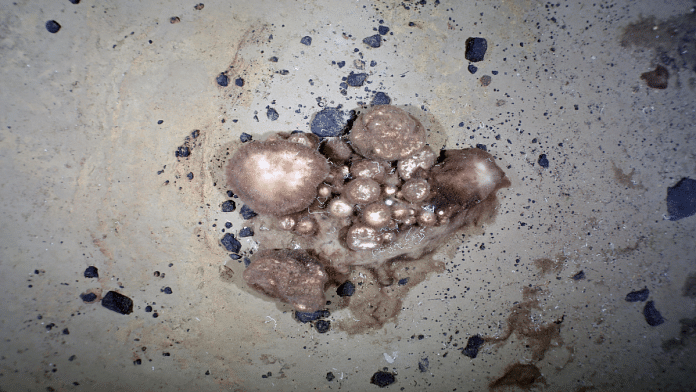Bengaluru: A new study has reported the discovery of a dense community of sponges on the floor of the Arctic Ocean that are feeding on fossilised remains of an extinct ecosystem of tube worms. The ocean is very poor in nutrients, and sources of food for sponges here were previously unknown.
The study, which is based on the findings of researchers from Germany, Netherlands and Norway, was published this week in Nature Communications, a peer-reviewed scientific journal.
The findings reveal unique ways in which Arctic life supports itself under the thick layer of ice that covers the sea throughout the year. The research team found that the new, extremely dense sponge community covered previously volcanically active parts of the seafloor called seamounts. These sponges are over 300 years old, and co-exist with bacteria, which help break down nutrients from the extinct volcano for the sponges.
Spanning over 15 square kilometres on the Arctic seafloor, the sponges were found to be a mix of various species and genera. The densest aggregations were on the flat upper parts of each seamount’s peak, with mats upto 15 cm thick, at depths ranging from 700 to 1,000 metres below the surface. Many were also budding, indicating that their reproductive processes were active.
The researchers state that this hotspot ecosystem is unique to the Central Arctic Ocean, and the now-extinct ecosystem that the sponges are feeding on in turn fed on nutrients and heat released from the degassing of these volcanic mounts.
The international researchers made the discovery during the September-October 2016 survey of the renowned German polar research vessel RV Polarstern, which explored the Central Arctic, and has made previous groundbreaking Arctic discoveries like the largest fish colony ever found.
Also Read: 38°C in Siberia is new Arctic temperature record, UN met body says it’s like Mediterranean
Extracting nutrients from fossilised remains
Sponges, like corals, are ecosystem engineers, because they are often long-lived and accumulate biomass. They influence the local ecosystem by providing habitats for organisms to settle on or camouflage in. This, in turn, enhances biodiversity.
They are filter feeders, and can filter hundreds of litres of water in dense communities. They feed on both organic matter, as well as break down nutrients dissolved in seawater. They co-exist with a large number of microbial species and bacteria which produce enzymes necessary for nutrient breakdown from organic matter.
To identify food sources for the sponges, the research team used under-ice seafloor mapping with biomass sampling techniques, in the absence of underwater hydrothermal vents, which support life.
Because seamounts are formed from tectonic or volcanic activity, they sometimes vent compounds like methane and sulphur which can support microbial growth. The seamounts that were surveyed were not active, and the sponges did not contain any of the known microbes that break down methane and sulphur.
Then the researchers noticed that on top of the peaks of the seamounts were black deposits, and sponges aggregated the thickest on them. Upon sampling, the black matter turned out to be organic matter from extinct tube worms called Siboglinidae. Upon further investigation and sampling, they could confirm that the sponges were extracting nutrients from these now-decomposed, broken-down worms that lived thousands of years ago.
The authors concluded that the sponges use this new food source, fossilised remains, with the help of bacteria that use enzymes to break down the remains for nutrients. The findings provide a crucial window into the world of arctic seafloor ecosystems and nutrient recycling.
“With sea-ice cover rapidly declining and the ocean environment changing, a better knowledge of hotspot ecosystems is essential for protecting and managing the unique diversity of these Arctic seas,” write the researchers in their paper.
(Edited by Gitanjali Das)
Also Read: Viral video showing a gigantic Moon eclipsing the Sun ‘in the Arctic’ is fake



